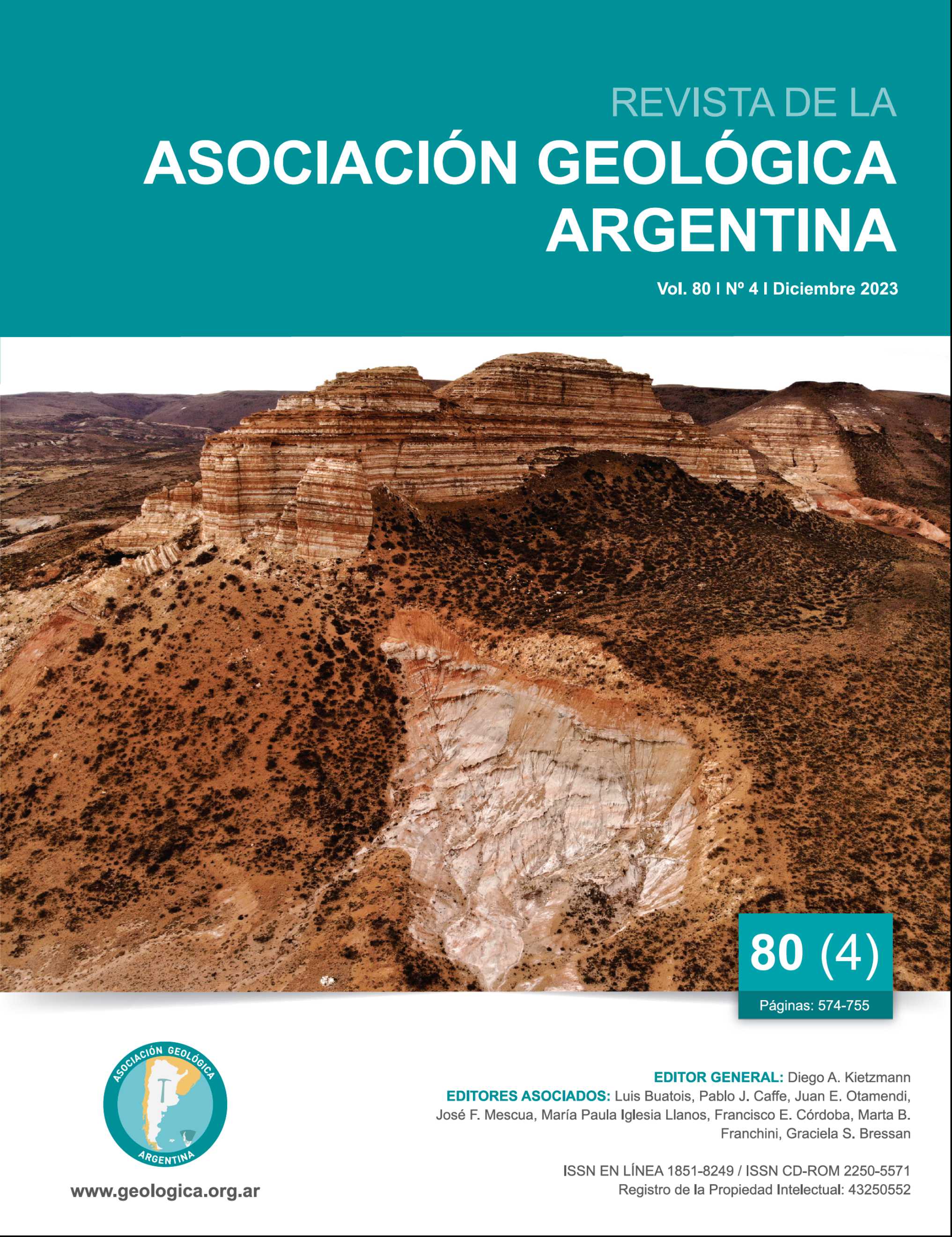Late Pleistocene-Holocene structures in the Central Precordillera: Their potential as seismogenic sources
Main Article Content
Abstract
Between 29° and 32° S, along the eastern border of the Andean orogen, numerous earthquakes have been recorded that have caused changes in the landscape throughout geological history. In the southwestern flank of the Matagusanos depression, located in the eastern foothills of the Precordillera Central geological province, a detailed study was conducted on structures exhibiting Quaternary tectonic activity. Four distinct geomorphological units were identified: mountainous, hilly, transition, and depressed, all of which are closely linked to the tectonic evolution of the Precordillera. The transition unit revealed various indicators of Quaternary tectonic activity, including anomalies in the drainage pattern, fault scarps, alignment of springs, and displaced alluvial terraces. These characteristics suggest Quaternary structures that have been grouped and defined in this study as part of the El Cajón Fault System. Within this context, four parallel fault scarps oriented in a north-south direction were identified, characterized by a west-facing slope and reaching maximum heights of 4 m. Associated with one of these scarps, a high-angle thrust fault with a westward inclination (345°, 81° NE) was observed in a natural outcrop. This fault juxtaposed the Mogna Formation (upper Pliocene) over Quaternary (Q2) alluvial deposits. An Optically Stimulated Luminescence (OSL) dating of the Quaternary sediments affected by the fault yielded an age of 8880 +/- 2000 years, with no evidence of deformation in the more recent levels (Q1). This suggest that the fault did not have activity following the early Holocene. From the morphotectonic analysis (planar and linear markers) of the El Cajón Fault System, it is suggested that this structure is a potential seismogenic source located very close to the city of San Juan and three hydroelectric dams along the San Juan River. This could generate a seismic event ranging between Mw=5.7 and Mw=6.3.
Article Details

This work is licensed under a Creative Commons Attribution-NonCommercial 4.0 International License.
Nota de copyright
Los autores conservan los derechos de autor y garantizan a la revista el derecho de ser la primera publicación del trabajo licenciado según una licencia de atribución Creative Commons que permite a otros compartir el trabajo con el reconocimiento de la autoría y de la publicación en la que se publicó por primera vez.
Declaración de privacidad
Los nombres y direcciones de correo electrónico introducidos en esta revista se usarán exclusivamente para los fines declarados por esta revista y no estarán disponibles para ningún otro propósito u otra persona.

